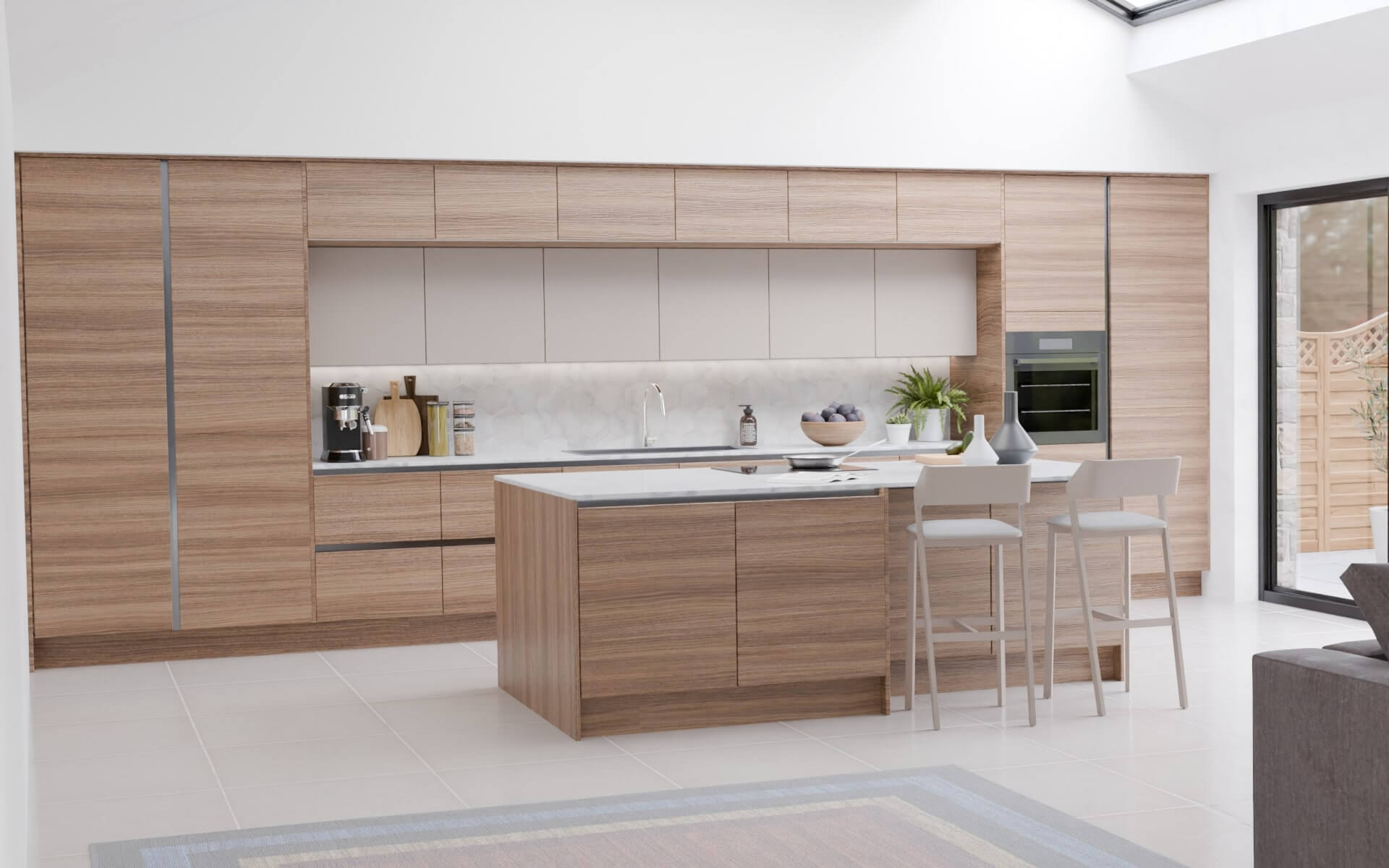Top, Mid and Vertical True Handleless Profiles & Rails Explained

True Handleless profiles are aluminium rails that sit behind your kitchen doors and drawers. Instead of pulling on a handle, you use the gap created by the profile to open each unit. It keeps the kitchen tidy and uniform, with uninterrupted lines across doors and drawers.
Better Kitchens offers profiles in six finishes:
Brushed Silver, Brushed Copper, Brushed Bronze, Brushed Brass, Anthracite and Brushed Black.
There are three main types: top, mid, and vertical. Each one has a specific job, and they all work together to complete the handleless layout.
Top Profiles

What They Do
Top profiles are fitted along the top edge of base cabinets and drawers, just below the worktop. They create a grip space behind the door or drawer front, allowing you to open it easily.
Where They’re Used
- Across all base units
- On islands or peninsulas
- In corner runs
What’s Included
- Top Profile – The main aluminium rail that runs along the cabinet tops.
- Top External Corner – Joins profiles neatly around outward corners.
- Top Internal Corner – Links profiles on inward angles.
- Top End Plate – Closes off the end of the profile at a wall or tall panel.
- Quick Fix Bracket – Secures the rail to the cabinet.
Top profiles are available in full 4m lengths or shorter 2m versions to reduce offcuts.
Mid Profiles

What They Do
Mid profiles are used between drawers on the same cabinet, normally between the middle and lower drawer. They allow lower drawers to be opened while keeping the same clean access as the top profile.
Where They’re Used
- On two or three-drawer units
- In long drawer runs where consistency matters
What’s Included
- Mid Profile – Sits between drawer fronts to allow grip.
- Mid External Corner – Connects around outward-facing corners.
- Mid Internal Corner – Fits inward corners.
- Mid End Plate – Finishes the run neatly at walls or panels.
- Quick Fix Bracket – Keeps the profile in position during fitting.
Mid profiles are needed if your kitchen unit has more than one drawer. They provide access to the lower drawer while keeping the handleless design consistent.
Vertical Profiles

What They Do
Vertical profiles are fitted between tall units like fridge housings, larders, and oven towers. They give you access along the side of the door instead of the top.
Where They’re Used
- Between single tall cabinets
- Between double-door larder units
- Around appliance towers
- As spacers at ends or against walls
What’s Included
- Vertical Single Door Profile – For tall cabinets with one door.
- Vertical Double Door Profile – For double-door tall units.
- Appliance Spacer – Creates space around integrated appliances for smooth opening.
- Rear Spacer Set – Ensures the profile sits correctly during fitting.
These need accurate planning—especially around ovens, fridges and freezers—so doors can open fully without clashing.
Bringing It All Together
Each profile type plays a part in making a handleless kitchen work:
- Top profiles open doors and upper drawers.
- Mid profiles create a two opening points.
- Vertical profiles give access to tall cabinets and appliances.
They don’t just look consistent—they are essential for function. Poor planning will lead to problems during fitting, especially with built-in appliances.
Got a layout in mind? Start by mapping out where each profile will go. Better to adjust now than struggle later.
Not sure how the profiles fit into your kitchen layout? Speak to the True Handleless experts at Better Kitchens.


